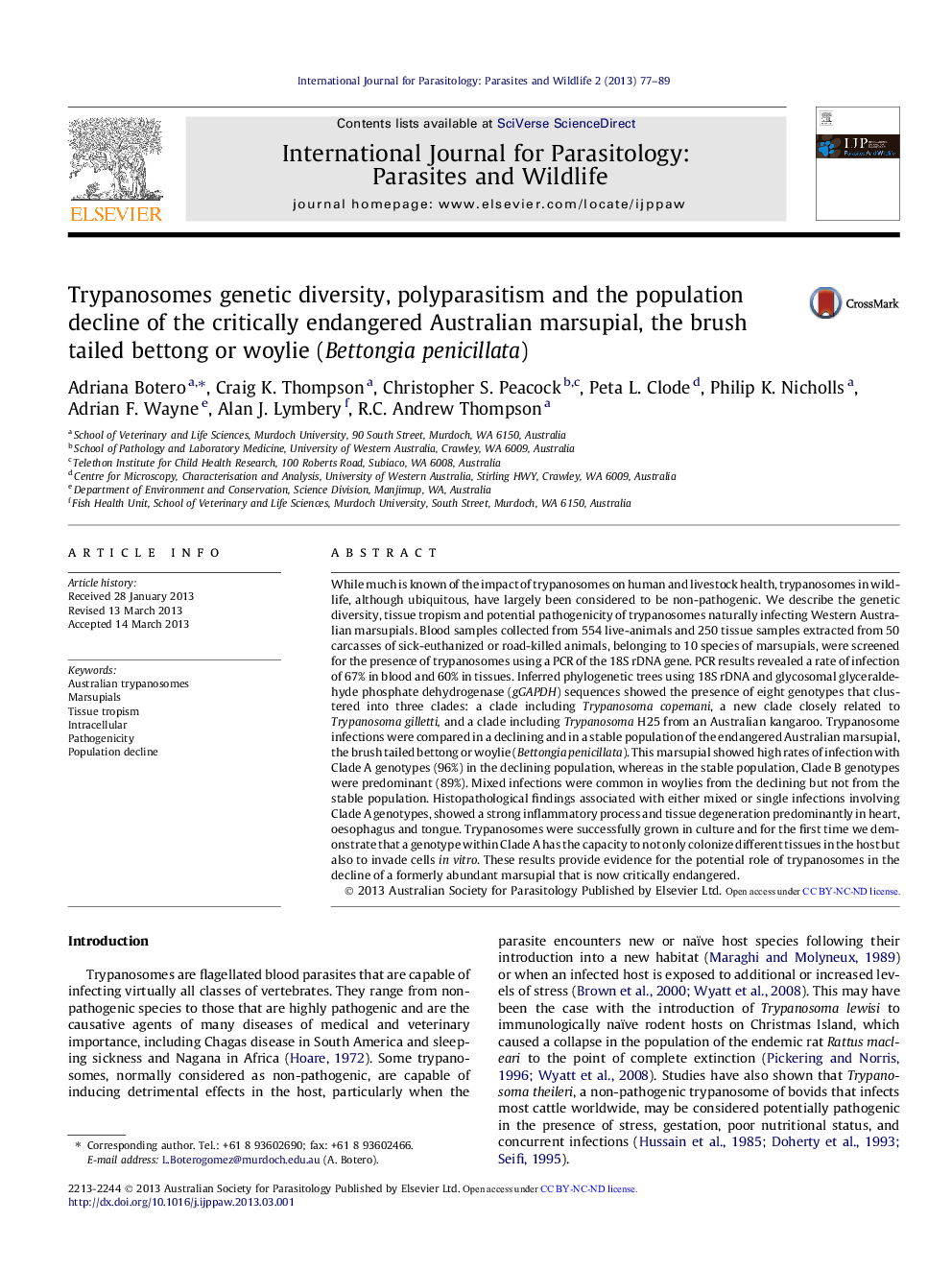| Article ID | Journal | Published Year | Pages | File Type |
|---|---|---|---|---|
| 2055278 | International Journal for Parasitology: Parasites and Wildlife | 2013 | 13 Pages |
•Trypanosomes in Australian marsupials comprise a heterogeneous community.•The woylie was the only species found co-infected with different trypanosomes.•Some of the trypanosomes found are able to colonize several tissues in the host.•Trypanosoma copemani is able to invade cells in vitro.•Association between T.copemani and mixed infections with the decline of the woylie.
While much is known of the impact of trypanosomes on human and livestock health, trypanosomes in wildlife, although ubiquitous, have largely been considered to be non-pathogenic. We describe the genetic diversity, tissue tropism and potential pathogenicity of trypanosomes naturally infecting Western Australian marsupials. Blood samples collected from 554 live-animals and 250 tissue samples extracted from 50 carcasses of sick-euthanized or road-killed animals, belonging to 10 species of marsupials, were screened for the presence of trypanosomes using a PCR of the 18S rDNA gene. PCR results revealed a rate of infection of 67% in blood and 60% in tissues. Inferred phylogenetic trees using 18S rDNA and glycosomal glyceraldehyde phosphate dehydrogenase (gGAPDH) sequences showed the presence of eight genotypes that clustered into three clades: a clade including Trypanosoma copemani, a new clade closely related to Trypanosoma gilletti, and a clade including Trypanosoma H25 from an Australian kangaroo. Trypanosome infections were compared in a declining and in a stable population of the endangered Australian marsupial, the brush tailed bettong or woylie (Bettongia penicillata). This marsupial showed high rates of infection with Clade A genotypes (96%) in the declining population, whereas in the stable population, Clade B genotypes were predominant (89%). Mixed infections were common in woylies from the declining but not from the stable population. Histopathological findings associated with either mixed or single infections involving Clade A genotypes, showed a strong inflammatory process and tissue degeneration predominantly in heart, oesophagus and tongue. Trypanosomes were successfully grown in culture and for the first time we demonstrate that a genotype within Clade A has the capacity to not only colonize different tissues in the host but also to invade cells in vitro. These results provide evidence for the potential role of trypanosomes in the decline of a formerly abundant marsupial that is now critically endangered.
Graphical abstractFigure optionsDownload full-size imageDownload as PowerPoint slide
